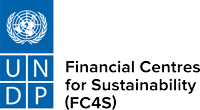Archives: Publications
CHARTER FOR GENDER FINANCE IN FINANCIAL CENTRES Signed on 26 September 2023 in Dublin, Ireland
FC4S Gender Finance Booklet
The FC4S Network 2023 State of Play Report
Document summary of The FC4S Network 2023 State of Play Report
State of Play Report – Chinese Version
FC4S Biodiversity Finance Paper
All stakeholders in financial and capital markets are reckoning with the challenge of Biodiversity Finance – from central banks and supervisors, institutional investors, stock exchanges and bond markets, to standard setters, rating agencies, and data providers.
The link between climate and biodiversity action is becoming clearer. Climate change is one of the primary drivers of the natural world’s decline 3 but mitigation and adaptation efforts are made considerably more challenging by the continued plundering of natural resources, which in turn causes further destruction of the natural world and exacerbates the climate emergency.
Increasingly, governments and communities are seeking actions that address both challenges together. Among these includes increased attention and recourse to Nature-based Solutions 4. At the FC4S 2020 Annual General Meeting, the secretariat proposed exploring the emerging topic of Biodiversity Finance to add it to the FC4S work programme.
A Working Group was established and, in collaboration with technical experts, identified key facets of the issue through a mapping exercise. The group then helped to draw up a Biodiversity Finance Action Plan that addresses the needs of financial centres. The Working Group addressed five facets of Biodiversity Finance:
-Transparency and disclosure
-Data
-Fintech
-Promoting a “Nature Positive” norm
-New financial instruments
The FC4S Secretariat proposes to produce a simple guide for financial centres – and particularly those in the emerging markets – on new and innovative financial vehicles for nature finance and, if the level of interest is genuinely high enough, to organize capacity building events to promote and apply these.
Download the report to learn more.
Working Paper – Policies to Enable Sustainable Infrastructure
Working Paper – Policies to enable Sustainable Infrastructure
Sustainable and quality infrastructure is indispensable for delivering better and more inclusive economic, social, and environmental conditions and supporting growth by expanding access to vital services and improving economic opportunities for all. If executed well, infrastructure can lead to equitable and sustainable economic growth, skill development, employment, income growth, labor productivity, business competitiveness s, and trade. Thus, it has a critical role in achieving the Sustainable Development Goals (SDGs).
Current global discussions of sustainable infrastructure recognize the importance of adopting an integrated and systemic view, strategically considering long-term aspects, including risks and impacts on the people and planet that ignoring sustainability considerations within infrastructure development entails. The role of the public sector in sustainable infrastructure development is utmost, encompassing from guaranteeing a robust institutional and governance framework, to delivering well-developed project planning and development, while helping mobilize finance and ensuring absolute value for money from infrastructure projects.
This document describes challenges and opportunities on the application of a comprehensive life-cycle infrastructure approach on a modern, sustainable and proactive policy, including transparently monitoring the projects and mitigating financial, operative, and sustainable risks. It highlights actions initiatives and policies – by diverse stakeholders and at different implementation levels – for each infrastructure life-cycle stage (planning, procurement, designing, financing, construction, operation, maintenance, and end). We propose to adopt sustainable infrastructure from a life cycle approach at the city level, since their infrastructure needs as a starting point can help select and ultimately deliver and manage infrastructure developments in a sustainable manner.
Leading Financial Centres Stepping Up Sustainability Action
The fourth annual State of Play report by the UNDP-hosted Financial Centres for Sustainability (FC4S) Network has identified several key areas where more focus is required to underpin progress around the sustainable finance agenda.
Overall, the report provides compelling evidence that financial centres’ initiatives were characterised by strong growth, increased scope, greater maturity and accelerated action across 2021. And with this year’s COP27 expected to focus on unlocking further capital in support of the transition, 2022 is shaping up to be an important year for financial centres and their sustainable finance activities.
The report, ‘Leading Financial Centres Stepping Up Sustainability Action’, is published today Monday, 28th February.
This year’s assessment, which surveyed 29 financial centres around the globe, reveals seven key insights on how financial centres across all continents are mobilising their capital, resources, connectivity, and expertise to support low-carbon transition and the achievement of the UN Sustainable Development Goals (SDGs). It also identifies the barriers they need to overcome to achieve these goals.
Key findings of the report highlight the need for:
- A Multistakeholder Approach and International Collaboration – Stakeholders’ heterogeneity within financial centres, with more than 70% of surveyed centres having significant private sector involvement, is critical to scaling up sustainable finance, as it enables systemic approaches. Also, international connectivity allows for the exchange of experiences and solutions.
- More and better data – over 60% of the 29 financial centres reported that data quality and availability are among the top barriers to scaling up sustainable finance.
- Standardization – 52% of respondents indicated that working towards consistency across the development of standards, taxonomies and guidelines is a top priority to their institutions.
- Professional development and education – 52% of financial centres surveyed reported that the lack of capacity and qualified workforce on sustainable finance is among the top barriers to scaling up sustainable finance. While an increasing number of training programmes at different levels have been reported, only 21% of financial centres have available all types of educational activities related to sustainable finance and only 28% and 35% percent reported having postgraduate and undergraduate courses related to sustainable finance available.
- Policy and regulatory engagement – 48% of respondents emphasised this as a top priority in 2022. The regulatory environment remains a critical driver of sustainable finance. This year, 27 out of the 29 sampled financial centres were home to at least one financial instrument or incentive implemented by public institutions, reaching at least 255 policies collectively.
- More options to scale up sustainable finance – 86% of financial centres reported barriers related to mobilising sustainable funds in this edition. Persistent challenges in this regard include the lack of sustainable project pipelines (40%) and the lack of supply of sustainable financial products (60%).
- Reliable commitments – The report noted concern around the quality and impact of market players commitments – almost three quarters of the 270 sampled market participants reported that they committed to mobilising finance for sustainability purposes, but only one quarter exclude companies engaged in fossil fuel activities.
Input to National Approaches – An analysis of Sustainable finance roadmaps: charting the path to financial system transformation
As governments around the world strive to combat the burgeoning threat posed by climate change, policy makers are engaged in a groundbreaking effort to realign their national financial systems to support the objectives of sustainable development. Having long viewed their institutional objectives as either ancillary to climate policy, policymakers increasingly recognize the financial system’s vital crosscutting role in promoting climate change mitigation and adaptation, as well as sustainable development more broadly.
To organize the different range of actors involved in the transition to sustainable finance around a common conception of their roles and responsibilities, national authorities have started to deploy strategic roadmaps. These documents generally provide recommendations to help prioritize actions and coordinate activities among policymakers, supervisors, regulators, associations, corporations, and other financial sector participants to accelerate the expansion of sustainable finance. Furthermore, these reports have served as important inputs to the development of actionable sustainable finance strategies, along with several other inputs and agreements, including those from international forums, networks, and organizations.
The document offers a detailed analysis of the structure and characteristics of 41 sustainable finance roadmaps created by 30 countries between 2014 and 2021, including an in-depth case studies section – covering Canada, Japan, Luxembourg, Mexico, Nigeria, Switzerland, Germany, and Ireland – to understand how their recommendations are being considered within national activities and strategies. Also, a Natural Language Processing (NLP) analysis was included to automatically identify their key topics.
This research was led by the UN-convened Financial Centers for Sustainability (FC4S) network, in collaboration with the World Bank, under the direction of the Principle 5 Workstream of the Coalition of Finance Ministers for Climate Action.
Key findings highlight the need for:
- A broad-based participatory process involving the institutions that will ultimately implement roadmap recommendations.
- The definition of clear implementation responsibilities, including monitoring arrangements and performance indicators (when possible), avoiding vague language and unrealistic objectives.
- The periodic assessment and publicly reporting of the state of sustainable finance and the changes underway, to help prevent backsliding.
Insights from the roadmaps content show that:
- Sustainable finance roadmaps should consider addressing data gaps through available digital tools, to increase data quality and enable market participants to incorporate sustainability more effectively into their decisions. Enhanced reporting and disclosure requirements were included in 93% of the roadmaps examined.
- The adoption of existing international standards or the development of new ones appeared in 66% of the documents.
- Most (71%) of the examined roadmaps recommended capacity-building programs about sustainable finance within the financial system and expanded education and training opportunities for finance professionals.










































